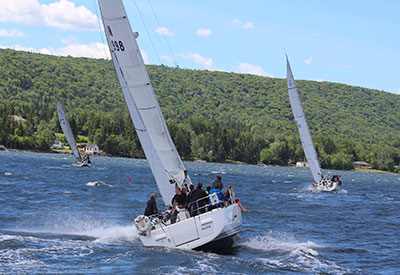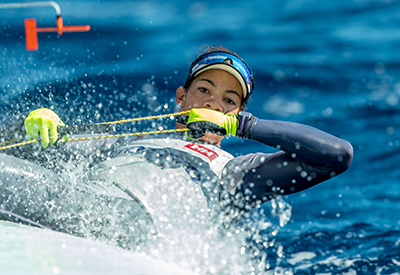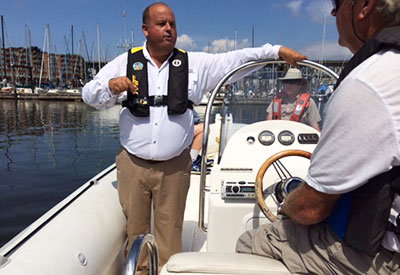Electric Shock Drowning: Boating and Marina Electrical Safety Resources

July 12, 2016
Helpful tips reduce the risk of electric shock drowning and boating electrical hazards
With summer in full swing, the American National Fire Protection Association (NFPA) and Electrical Safety Foundation International (ESFI) are joining forces to remind boaters, marina operators and swimmers to be aware of the potential electrical hazards that exist on board boats and in the waters surrounding boats, marinas and launch ramps. Electric shock drownings (ESD) can occur when marina or onboard electrical systems leak electrical current into the water. The leak can cause a shock that can injure, disable or kill a person, as reported in the NFPA Journal article, Troubled Waters.
ESFI has boating and marina safety resources including brochures, toolkits, reference guides, and checklists that cover safety devices, common ESD causes and prevention methods, response protocol, and marina electrical safety considerations. ESFI recommends five key tips for boat owners:
Swimming Safety – Never allow swimming near the boat, marina, or launching ramp. Residual current could flow into the water from the boat, or the marina’s wiring, potentially putting anyone in the water at risk of ESD.
Put It to the Test – Be sure your boat is properly maintained and consider having it inspected annually. Ground fault circuit interrupters (GFCIs) and equipment leakage circuit interrupters (ELCIs) should be tested monthly to ensure functionality. Conduct leakage testing to determine if electrical current is escaping the vessel.
Use the Right Tool – Never use household cords near water. Use only portable GFCIs or shore power cords (including “Y” adapters) that are “UL-Marine Listed” when using electricity near water.
Know Your Surroundings – Know where your main breaker(s) are located on both the boat and the shore power source so that you can respond quickly in case of an emergency. Be aware of any potential electrical hazards by checking for nearby power lines before boating, fishing, or swimming.
Learn the Code – On a regular basis, have your boat’s electrical system inspected and upgraded by a certified marine electrician to be sure it meets the required codes for your area, which may include National Electrical Code® (NEC®), NFPA, and American Boat & Yacht Council (ABYC) safety codes and standards.
“Boaters and marina owners alike recognize the need to inform the public about the dangers of electric shock drownings,” said Lorraine Carli, NFPA’s vice president of Outreach and Advocacy. “By sharing ESFI’s boating and marina safety resources, we hope to educate people so that they can safely enjoy a fun summer on the water.”
“Many swimmers, boat and marina operators unknowingly place themselves in danger by swimming near electric-powered boats and docks,” Brett Brenner, ESFI president, said. “As incidents of electric shock drowning continue to occur every year, we are collaborating with NFPA to emphasize the importance of proactive measures that will help prevent these tragedies and other electrical injuries while out on the water.”
Addressing marina and boating electrical safety is a multi-faceted issue due to different jurisdictions, standards and codes; the question of where land and water begin and end; consideration of where boats enter and depart; and different perspectives among the boating community and marina operators – but all sides agree that it is important to elevate boating and marina electrical safety awareness via proactive outreach.





























